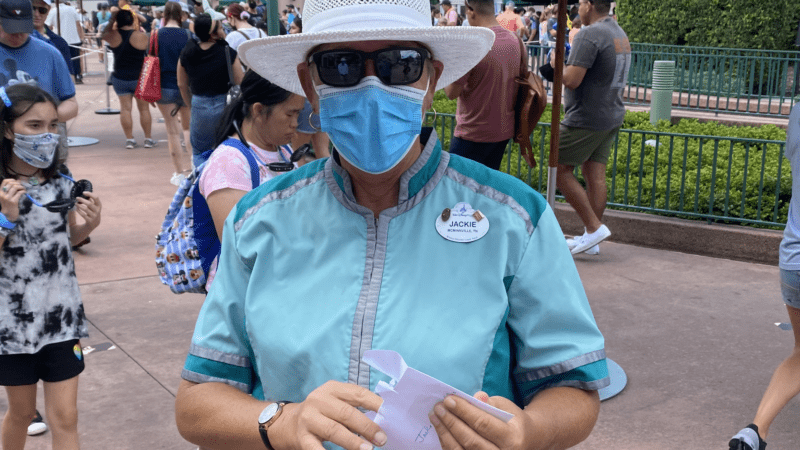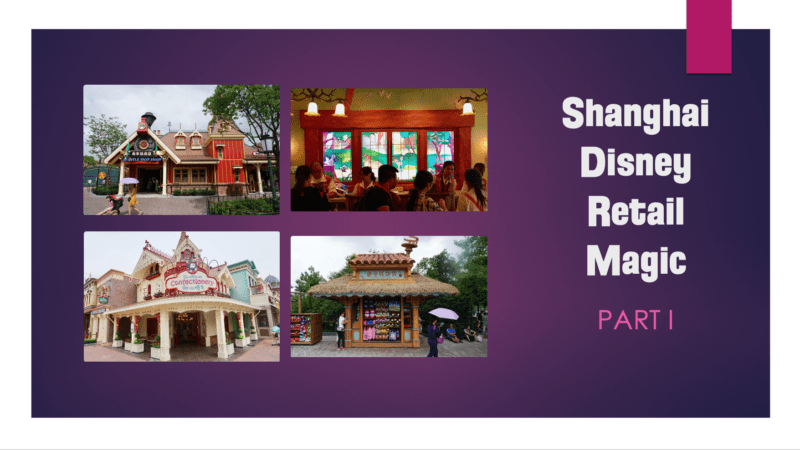Show: A Disney Key to Excellence

Disney has four keys for creating happiness. One of those keys is Show. We’ll look at concepts around how Disney creates a great show, and what it means to you and your organization.
You can find our podcast here on Podbean, iTunes, Spotify, MyTuner, and ListenNotes. Be sure to subscribe and share with others!
You may also want to refer to our first and fairly recent podcasts/posts on the Four Keys, which was on Safety. and another that focused on Courtesy. Look for a future episode on Efficiency. These concepts are taught from day one of Disney Traditions–their orientation–and are applied daily.
Disney’s Service Behaviors for Show
As mentioned in earlier podcasts and posts, Disney has articulated behaviors for Show. They largely focus on Cast Member expectations. They include:
I stay in character and perform my role in the show
- Use themed language and actions that support the story of my area.
- Preserve the magic.
- Model the Disney Look
I ensured my area is show-ready at all times.
- Keep areas clean and well maintained.
- Take action to correct or report distractions from the show.
Building on these themes, we want to talk about Show in terms of not just the People, but the Place, Process & Product.

1. Emphasize The Disney Look
Here’s is what Disney’s website has said about “The Disney Look”:
“At Disney Parks and Resorts, we’ve become famous for our friendly, classic appearance. This look is not a coincidence, but a result of our cast members’ support of the Appearance Standards, or as we call it, the Disney Look.
“The Disney Look is a classic look that is clean, natural, polished and professional, and avoids “cutting edge” trends or extreme styles. It is designed with our costumed and non-costumed cast members in mind. Our themed costumed cast members are a critical part of enhancing the experience of our Disney show, and our non-costumed cast members also play an important role as representatives of the Disney brand. Regardless of the position you hold with us, when you take pride in your appearance, you become a role model for those around you, and you convey the attitude of excellence that has become synonymous with the Disney name.”
I think more important than “The Disney Look” is the principle of “Good Show, Bad Show. How do you present yourself to create the best show possible. The challenge is that Disney’s “Look” has been so focused on everything from ear rings to beards to nail polish and especially the costume, that it has almost made other expected, and really more important behaviors, second citizens. And yet, in terms of delivering great show and great service, don’t these behaviors matter more?
- Being Present
- Attentive Focus
- Direct Eye Contact
- Listening
- Empathy
- Smile–It makes up for so much!

But a smile doesn’t have to just be among Cast Members. It can be in the setting as well:

2. The Show Must Go On
Keep areas clean and well maintained. This includes the following:
- Testing rides and attractions before putting them into daily operation
- Building attractions that are meant to last for decades and not for a season
- Testing materials and products in advance to make sure they put up with wear and tear
- Large teams of people working third shifts to get the park up and running by the next day
- Changing lightbulbs out when they have burned out

- Constantly assigning custodial crew to maintain and clean restrooms
- Having backup costumes on hand for animatronics.

- Flowers having back ups on hand when one fades out in the park
- Having show-worthy temporary signage in place when things break down or are inoperative

- Having a “rainy day plan” because the “show must go on”

The big message from all of this is keeping your operation fully functional and always “ready for business”. You may not have a “show”, but the “show” must go on.
3. Separate Onstage From Backstage
There are many ways the backstage is separated from the onstage experience:
1. We utilize a language that is stated onstage in front of other guests. We do not talk about certain matters in the earshot of the guest.
2. By being clear about what areas are open to guests and which are not.

3. By providing areas backstage for Cast Members to “let their hair down” and be away from the guest. This includes providing both outdoor and indoor facilities.
4. Making sure guests can’t be in areas that are unsafe, or that might be under construction.

5. By putting tools, facilities and parts of the operation away from the view of the guest.

6. By being clear about when the Cast is in view of the Guest, such as with this simple yellow stripe put in place backstage where the parade enters Frontierland.

7. By placing berms and other obstacles to remove distractions from the guest experience. One of the biggest of these is the Cadillac mountain range at Radiator Springs:

4. Utilize the Senses
John Hench shared the following:
Think about it carefully. As we stand here and look at that castle, every one of our senses are coming into play. This is total involvement. You can never capture this moment and take it home with you in a camera or tape recorder. You can only take this experience home in your mind. Now, multiply this moment by an entire day…by a week…by a thousand other different experiences…and you start to get some idea of the Disney theme show.
We’ll do other posts/podcasts that play on the senses, as Disney is a master of this, but know that all of the senses are important, and the more they play a role in enhancing your brand or offering, the better.
Also know that sometimes it isn’t just building on the senses but being aware of those senses that can taint the guest experience. A restroom that smells terribly will do that as well as any. That’s why it needs to be kept clean. And that brings us to the next topic.
5. Everyone Picks up Trash
At Disney the mantra is, “Everyone Picks Up Trash”. This is especially modeled by Walt himself in the photo below.

While there are custodial hosts and hostesses with a special responsibility toward more structured clean up challenges, everyone still has a responsibility to make sure that they do their part to keep it clean. Doing so also serves to level the playing field, and sending more of a team message, rather than a hierarchical message.
There are other processes and systems that support this, but the message to everyone on Day 1 is “Everyone picks up trash”.
6. Magic From Beginning to End
There’s a previous podcast/post that I did on this topic, of bookending the theme park experience. It picks apart the previous parking lot layout of Disney’s Hollywood Studios, as well as the previous entrance way into Tokyo Disney. Definitely check it out, as it emphasizes how powerful the beginning and end of the experience is.


One of the expressions we have for this is providing a “fond farewell” at the end of the day. You want to take responsibility to maintain a consistent brand look and feel from beginning to end.
7. Everything Speaks! Don’t Break The Magic
In another post called Don’t Break the Magic I talk about an experience I had on the Disney Cruise Line where Crew Members were cleaning up the theater with industrial trash cans before guests had left. It also speaks of a story John Hench shares about Walt Disney when he saw a young man bussing dishes by scraping food craps into a cardboard box at a table in front of diners.

John Hench shared the following:
Interestingly, for all its success, the Disney theme show is quite a fragile thing. It just takes one contradiction…one out of place stimulus to negate a particular moment’s experience. Take that street car conductor’s costume away and put him in double knit slacks and a golf shirt….replace that old Gay Nineties melody with a rock number…replace the themed merchandise with digital clock radios and electric hair dryers…tack up a felt-tip drawn paper sign that says ‘Keep Out’…place a touch of astro turf here…add a surly employee there…it really doesn’t take much to upset it all.
What’s our success formula? Well, it’s attention to infinite detail…the little things, the minor picky points that other companies just don’t want to take the time, the money, the effort, to do right. As far as our Disney organization is concerned…it’s the only way we’ve ever done it…it’s been our success formula in the past and it will be applied to our future projects as well. We’ll probably still be explaining this to outsiders at the end of our next two decades in this business.”
Everything speaks, and you must make sure that whatever your customers encounter, that everything they experience, is focused on optimizing your organization and brand at its best.
Souvenirs for Your Organization
“Show” may not be how you define your customer experience. But consider the following:
- How do you keep your operation fully functional and always “ready for business”.
- What is it that you want your customers to see and do when they are in your place of operation? What to you want to make sure they don’t see, or aren’t distracted by?
- How do you welcome your customers? How do you provide them a fond farewell?
- How can you build on the senses to create the best customer experience?
- How do you keep your facilities clean, neat and tidy?
- How do you maintain a consistent brand look and feel from beginning to end?
- What does everything speaks look like in your organization?
- What details do you need to pay attention to?
- How intentional are you in making sure you provide a good show versus a bad show?
More on Disney’s Keys to Success
We’ll focus on the last key, efficiency in weeks to come. To know more about the evolution of Disney’s Service Behaviors, visit this article on Disney at Work. For a larger treatise on this topic, be sure to check out The Wonderful World of Customer Service at Disney, available on Amazon.






